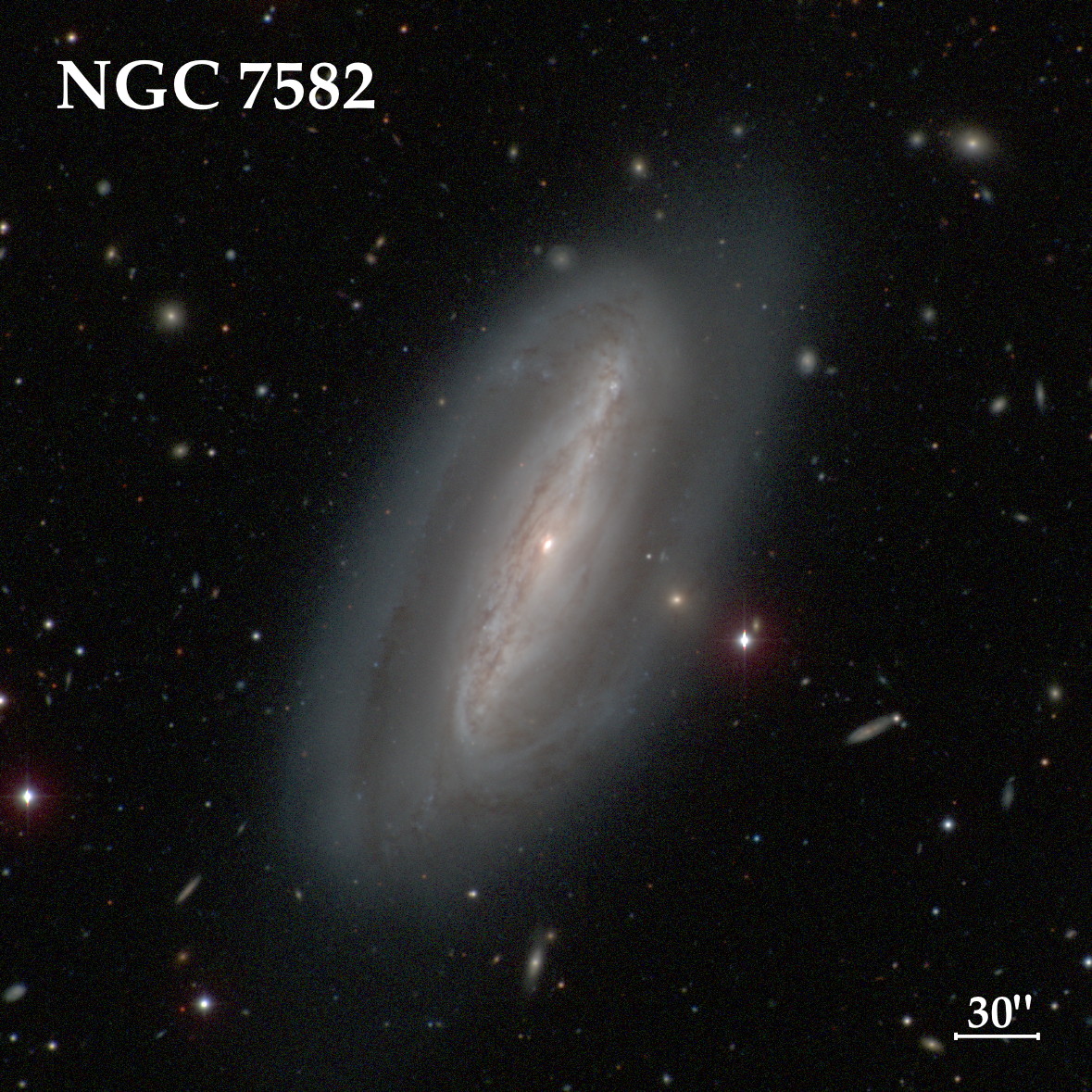Cosmos NGC 7582
Lurking about 70 million light years away from Earth in the constellation Grus, you will find the galaxy NGC 7582 — a spiral galaxy harbouring a supermassive black hole at its core.
The galaxy contains an active galactic nucleus (AGN) — an extremely energetic central engine powered by the supermassive black hole gobbling up material in its immediate surroundings. Matter heats up in this process, launching huge amounts of energy and powerful winds into the surrounding area. But what effect does this have on the galaxy at large?
To find out, a recent study, led by Stéphanie Juneau from NSF’s NOIRLab in the USA, looked at the distribution of different ionised elements in the galaxy. The image on the right shows oxygen, nitrogen and hydrogen in blue, green and red respectively. The red glowing areas are regions of high star formation activity, whereas the dominant blue regions show the cone-shaped material flowing out of the AGN. The image on the left, which covers the same area, shows a more classical view of this galaxy, with dust lanes obscuring blue and orange starlight.
